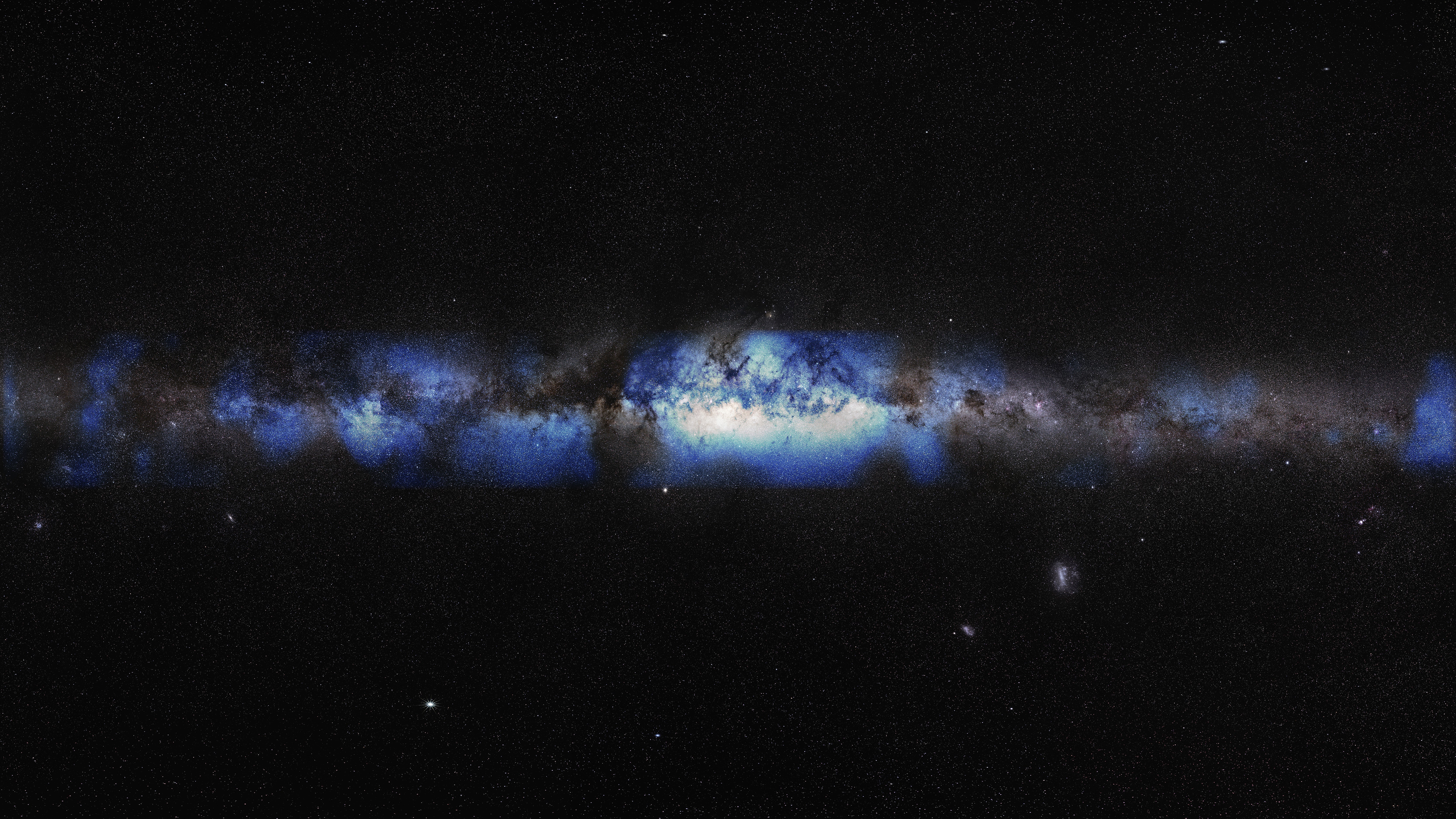Scientists finally see ‘ghost particles’ that surround us throughout the Milky Way
Discovery could offer an entirely new way of seeing the universe

Scientists have revealed a new picture of our galaxy: made up of invisible “ghost particles” that have not been detected until now.
The new image of our Milky Way shows the particles that surround us in vast quantities, but usually shoot straight through Earth without us being able to detect them at all.
Now scientists using a specially created observatory have been able to actually observe them, using thousands of sensors buried deep under a cubic kilometre of ice and attached together. Even with that highly complex equipment, the breakthrough in seeing the neutrinos required detailed development of machine learning algorithms that are able to sort the neutrons from the vast shower of other particles that constantly fly at the Earth.
It means that researchers have finally been able to see our galaxy in an entirely new way – not using light, as before, but by seeing actual matter as it flies through the universe.
And the scientists found that the glow of the neutrinos from the cosmos was immensely bright, outshining our own galaxy in a new way.
“What’s intriguing is that, unlike the case for light of any wavelength, in neutrinos, the universe outshines the nearby sources in our own galaxy,” said Francis Halzen, a physicist at the University of Wisconsin–Madison and principal investigator at IceCube.
Scientists hope the findings can open new ways of seeing into the cosmos, and unravelling its mysteries. Much is still unknown about the neutrinos themselves, but they might also be used as a way to “open some new windows on the Milky Way”, wrote Luigi Antonio Fusco in an article accompanying the new discovery.
“Observing our own galaxy for the first time using particles instead of light is a huge step,” said Naoko Kurahashi Neilson, professor of physics at Drexel University. “As neutrino astronomy evolves, we will get a new lens with which to observe the universe.”
The findings are described in a new paper, ‘Observation of high-energy neutrinos from the Galactic plane’, published in the journal Science.
Subscribe to Independent Premium to bookmark this article
Want to bookmark your favourite articles and stories to read or reference later? Start your Independent Premium subscription today.

Join our commenting forum
Join thought-provoking conversations, follow other Independent readers and see their replies